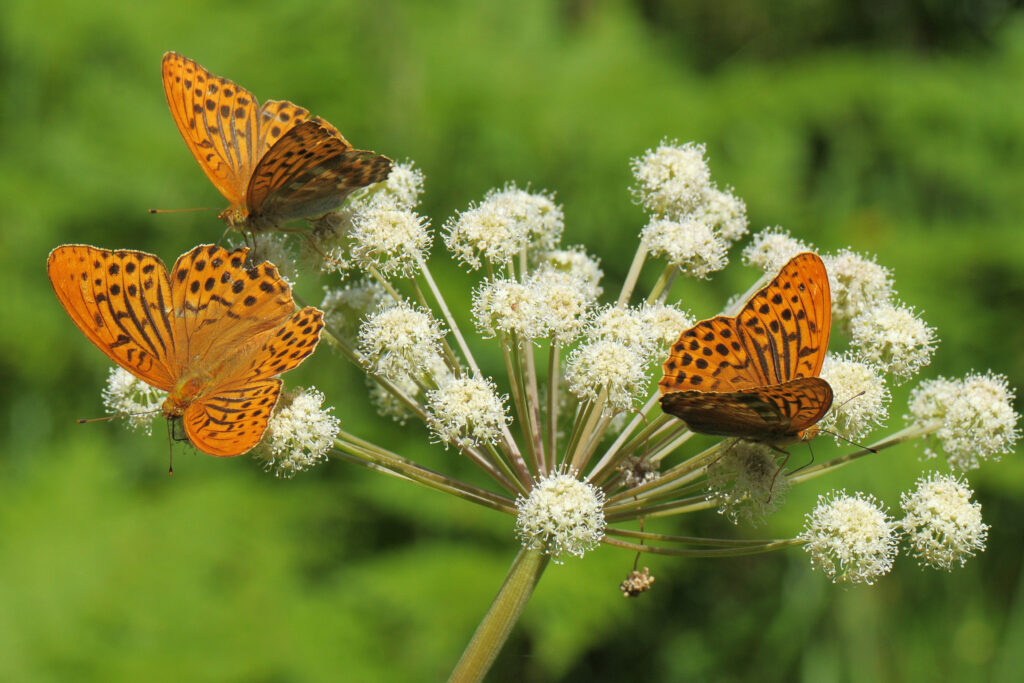Diversity of pollinators

The current decline in pollinators is making headlines around the world. Pollinators are various organisms feeding on plant pollen or nectar and fertilizing the plant while acquiring their food. Therefore, they play a vital part both in nature and in the production of food for humans – there would be no apples without bees to pollinate the flowers, just to name one example.
While most people may think of bees first when they hear about pollinators, there are also other important groups of insects in Finland that provide pollination, like butterflies and hoverflies. Insects are currently facing various threats, with a steep decline in habitats and the rising use of pesticides being prime among them. In Finland, a good example of disappearing habitats are traditional landscapes like semi-natural grasslands and meadows, which provide a variety of feeding plants for pollinating insects.
Many wild bees do not live in big hives, but solitary
When talking about pollinators, it is also important to note that there are differences between domesticated honeybees and wild bees. Honeybees are kept by humans as livestock to produce honey and provide pollination to crops or fruit trees. They live socially in big hives with a queen and worker bees.
Yet, there are hundreds of species of wild bees in Finland alone, and thousands worldwide. Maybe the most prominent wild bees are bumblebees, most of whom also form colonies. Yet, the majority of wild bees – like mason bees, for example – live solitary, which means that every female is fertile and will lay her eggs in underground burrows or build her nest in small cavities. These bees especially are threatened by a steep decline in suitable habitats for feeding and building nests.
Yet, everybody can help with battling this habitat loss and help pollinators! Gardens and balconies can be made more pollinator-friendly with simple measures – or in some cases, by simply letting nature be.
How to make green spaces more pollinator-friendly
Everyone can make their own garden (or their balcony!) more pollinator-friendly with some very easy measures.
- Refrain from using chemical insecticides
The most effective step in creating a more pollinator friendly environment doesn’t require any extra work – it’s more about not doing something. Chemical plant protection and insecticides pose a serious health risk to pollinators, so it’s best to avoid them. There are biologically safe alternatives! One way of dealing with aphids, for example, would be to attract ladybugs to your garden by installing a bug-hotel or leaving piles of woodcuttings in corners of your green space. There are also ways to make anti-aphid brews from stinging nettle.
- Provide sources of water
Especially as the summers are getting hotter, it is good to have water available in your garden for bees and other pollinators. Other animals like birds will benefit from this as well. You don’t have to start a big project like building a pond right away, if space or time doesn’t allow to do so. A shallow bowl of water that gets refilled and is provided with various stones for insects to sit on is a great start!
- Plant native flowers and cut back on weeding
The perfect food source for wild pollinators will always be the plants native to your region, as they have co-evolved for thousands of generations. In this way, some plants require particular insects for pollination, and some pollinators will prefer particular plants as their food source. This is why it’s a good idea to let native plants grow we generally consider as weeds. Did you know, for example, that the young of the beautiful peacock butterfly rely solely on stinging nettle as their food source? Furthermore, dandelions are among the first blooming plants of spring and therefore an important food source for wild bee queens. When it comes to planting, a native plant popular with pollinators is the goat willow tree, given there is enough space.
- Mow only parts of your lawn
A very easy way to provide both feeding sites and an additional habitat for wild pollinators is not mowing parts of your lawn, but letting them grow instead. These patches will turn into colourful wildflower fields without any additional work.
- Install a pollinator hotel
Another great way to attract more pollinators to your garden is to provide them with opportunities to nest by building a pollinator hotel. These can be bought in numerous shops by now, but it’s a great idea to do some research beforehand to make sure you provide the right kind of nesting space. For example, wild solitary bees use hollow stems or other small holes to build their nests. Building a pollinator hotel can be a great project to do together with kids as well, and it doesn’t have to be overly complicated! A good place to start is the online resource below: